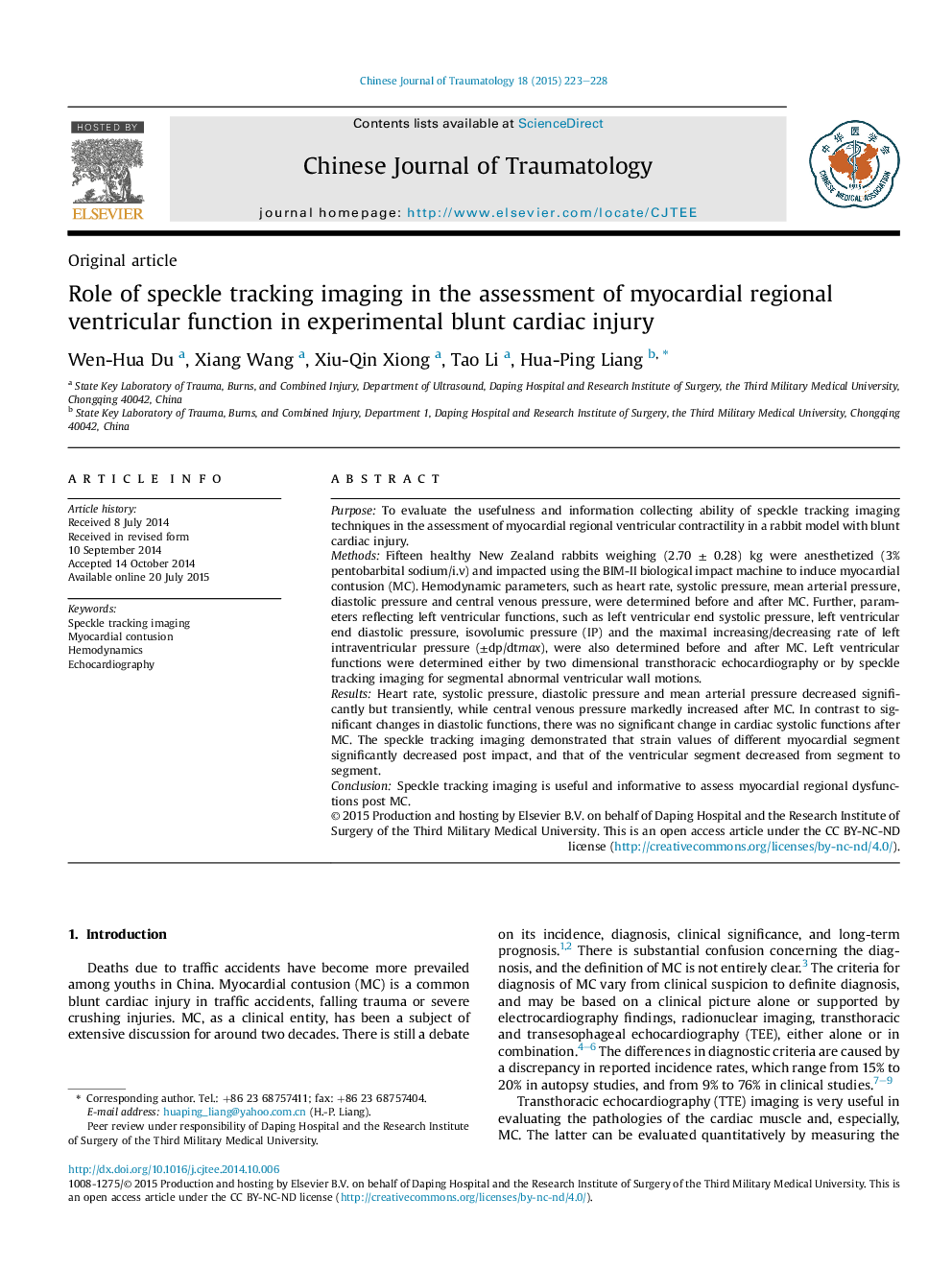| Article ID | Journal | Published Year | Pages | File Type |
|---|---|---|---|---|
| 3107179 | Chinese Journal of Traumatology | 2015 | 6 Pages |
PurposeTo evaluate the usefulness and information collecting ability of speckle tracking imaging techniques in the assessment of myocardial regional ventricular contractility in a rabbit model with blunt cardiac injury.MethodsFifteen healthy New Zealand rabbits weighing (2.70 ± 0.28) kg were anesthetized (3% pentobarbital sodium/i.v) and impacted using the BIM-II biological impact machine to induce myocardial contusion (MC). Hemodynamic parameters, such as heart rate, systolic pressure, mean arterial pressure, diastolic pressure and central venous pressure, were determined before and after MC. Further, parameters reflecting left ventricular functions, such as left ventricular end systolic pressure, left ventricular end diastolic pressure, isovolumic pressure (IP) and the maximal increasing/decreasing rate of left intraventricular pressure (±dp/dtmax), were also determined before and after MC. Left ventricular functions were determined either by two dimensional transthoracic echocardiography or by speckle tracking imaging for segmental abnormal ventricular wall motions.ResultsHeart rate, systolic pressure, diastolic pressure and mean arterial pressure decreased significantly but transiently, while central venous pressure markedly increased after MC. In contrast to significant changes in diastolic functions, there was no significant change in cardiac systolic functions after MC. The speckle tracking imaging demonstrated that strain values of different myocardial segment significantly decreased post impact, and that of the ventricular segment decreased from segment to segment.ConclusionSpeckle tracking imaging is useful and informative to assess myocardial regional dysfunctions post MC.
